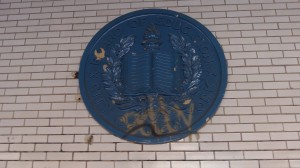In the 1960s, after years of failed attempts to compel the New York City Board of Education to propose and implement a feasible plan to integrate the schools, Black and Latino community groups demanded the right to control the schools. Three such groups of schools were permitted to experiment with “community control”: Ocean Hill-Brownsville in Brooklyn, Two Bridges in Manhattan, and East Harlem, also in Manhattan. The East Harlem group was given the organizational number: I.S. 201, which referenced both the intermediate school building and the entire complex, which included feeder elementary schools as well.
The parents and community leaders who had demanded community control had a specific understanding of what this designation meant: The schools would be run by and be held accountable to the community itself. The community would have the authority to hire, fire, and train school personnel. The community would develop the criteria against which the schools would be judged.
The Board of Education, on the other hand, was reluctant to hand over the reins of control. Nevertheless, with a grant from the Ford Foundation, the community-controlled school districts enjoyed a small measure of independence from the NYCBOE.
The promise of community control was especially attractive to the families in East Harlem. In 1966, the Board of Education reversed a longstanding promise to make the new intermediate school built on Madison Avenue and 128th Street a model of quality, integrated education. This building is the namesake of this site: M501. When the building was scheduled to open, the Board announced that this new school would be 50% Black and 50% Puerto Rican, which provoked the rancor of the frustrated community. Faced with this prospect, the community shifted gears and decided that if the schools were not to be integrated that the community ought to control the climate of the schools and how children learned and engaged with the world.
Community control was short-lived. Many writers on the topic believed that it was never intended to succeed or thrive. Charles E. Wilson, the former unit administrator to the I.S. 201 complex, writes:
It is here [I.S. 201] too that the New York City Board of Education created its deliberately defective experimental model for parent participation and decentralization. Although the establishment of the demonstration districts caused tumultuous opposition and bitter conflict, the Board of Education’s approach should not be regarded as either innovative or imaginative…What was imaginative was the effectiveness with which the cards were stacked against the success of the local communities. What was innovative was the clever way in which agreements were entered into without any care for long-standing precedents or union claims. Imagination and innovation were defensive weapons designed to protect the Educational Establishment.
Wilson, C. E. (1970). Year One at I.S. 201. Social Policy, 1(1), 10–17.
With this inauspicious beginning, the windowless building on Madison Avenue, building M501, has witnessed several more ambiguous community triumphs and disappointments.
The tale of Choir Academy is the matter for a dissertation. See, for example, Wallace Bennett Brown, D. (2006). The Founding and evolution of a school for the Boys Choir of Harlem: Choir Academy of Harlem (Dissertation). Fordham University.
Suffice to say, however, Choir Academy’s twenty-year tenure in building M501 has been a remarkable slice of history in East Harlem. After already being threatened with closure in previous years, the Panel for Educational Policy (PEP) voted this year to finally phase out the school. What had started as a magnet for talented youth has crumbled into a shell of its former glory.
As Choir Academy is phased out, two additional schools will take over its space. One is an alternative district school, the other is a charter school, Success Academy.
Disinvestment in district schools and offering charter schools as the shiny alternative is an unfinished story. The resources that we capture on this site are meant to be guideposts in an evolving discussion on the future of public education.



